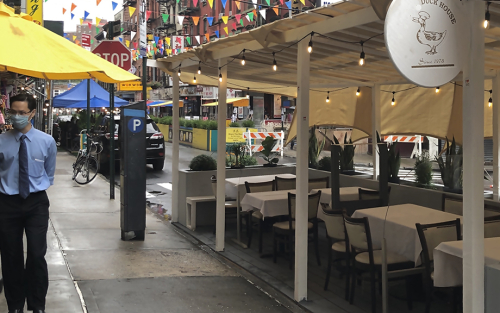The Regional Economy during the Pandemic

The New York-Northern New Jersey region experienced an unprecedented downturn earlier this year, one more severe than that of the nation, and the region is still struggling to make up the ground that was lost. That is the key takeaway at an economic press briefing held today by the New York Fed examining economic conditions during the pandemic in the Federal Reserve’s Second District. Despite the substantial recovery so far, business activity, consumer spending, and employment are all still well below pre-pandemic levels in much of the region, and fiscal pressures are mounting for state and local governments. Importantly, job losses among lower-income workers and people of color have been particularly consequential. The pace of recovery was already slowing in the region before the most recent surge in coronavirus cases, and we are now seeing signs of renewed weakening as we enter the winter.
Just Released: Labor Markets in the Region Are Exceptionally Tight

At today’s economic press briefing, we examined labor market conditions across our District, which includes New York State, Northern New Jersey, and Fairfield County, Connecticut, as well as Puerto Rico and the U.S. Virgin Islands. As the island economies continue to recover and rebuild from the destruction caused by last year’s hurricanes, employment has edged up in Puerto Rico and stabilized in the U.S. Virgin Islands. Meanwhile, as has been true throughout the expansion, New York City remains an engine of job growth, while employment gains have been more moderate in Northern New Jersey and fairly sluggish across most of upstate New York. Nonetheless, it has become more difficult for firms to find workers throughout the New York-Northern New Jersey region. It may not be terribly surprising that labor markets have tightened in and around New York City, where job growth has been strong, but labor markets have also tightened in parts of upstate New York, even in places where there has been little or no job growth. This is because labor markets are tightening as a result of changes in both labor demand and labor supply. In upstate New York, a decline in the labor force has reduced the pool of available workers.










 RSS Feed
RSS Feed Follow Liberty Street Economics
Follow Liberty Street Economics